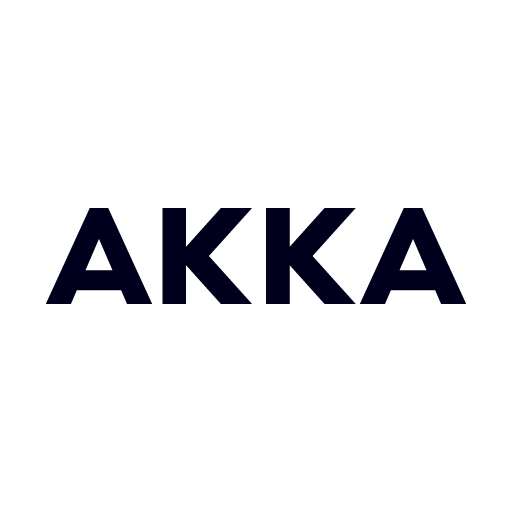TechEdge AI talks with Tyler about agentic systems
SYNDICATED POST
Originally posted at TechEdge AI.
1. Can you explain how the introduction of self-managed Akka nodes changes the way organizations can architect their distributed systems?
Tyler: Fundamentally, self-managed Akka nodes means that enterprises can gain all the traditional benefits of Akka – scalability, elasticity, availability – on any cloud infrastructure. By decoupling the runtime from the platform, self-managed Akka nodes shift the control plane from Akka-managed to customer-managed, allowing organizations to optimize for their specific compliance, latency, and cost requirements. Enterprise teams can deploy across multiple clouds or on-premises without changing code, enabling easier integration with existing infrastructure and security operations, and creating true infrastructure portability for their distributed systems.
2. We’re seeing a shift from CRUD systems to agentic architectures. What architectural gaps do agentic systems expose in traditional SaaS models?
Tyler: Traditional SAAS systems are highly deterministic, while agentic systems are inherently stochastic. In order to build reliable, accurate agentic systems, developers need to leverage strategies that create layers of certainty, incorporate eval-driven development, and build on an agentic platform that can support the necessary infrastructure to operate agents scalably and safely.
3. What does a typical transition look like—from prototyping agentic AI workflows to deploying them at production scale using Akka?
Tyler: Akka makes this simple. If an agentic system built with Akka builds and runs locally, then it will be identical in a production environment. There is no adjustment that has to be made for the agentic workflow to be made ready for scaling, resilience, or other production expectations.
More of the work is with the operations teams: determining what the memory recovery strategy will be, configuring persistence for memory storage, setting up security domains for authentication and authorization of users and agents, and mapping agents to an inference infrastructure that has different scaling properties different from the agents themselves. We separately provide an Akka Automated Operations offering to handle many of these Day 2 concerns. This is optional as Akka clusters can run on any infrastructure without any Akka “server” being installed previously.
4. How does Akka plan to evolve in the face of LLM development, edge computing growth, and increasing AI governance requirements?
Tyler: There are two critical problems that agentic developers face:
- Agentic systems get expensive, quickly. A 1K TPS agentic system will cost $.20 -$20 per second in LLM costs (that’s $6M / year starting!) and upwards of $40K / year in infrastructure hosting for agents, memory and orchestration. We are leveraging Akka’s actor-based concurrency model to build intelligence into agentic systems that will lower token consumption by up to 5%. This involves inline execution of evaluation, context mgmt, goal-targeting, summarization, cost::perf decisioning, dynamic prompting, MCP invocations, and exceptioning through “effects” in order to keep context windows small and to avoid unnecessary LLM execution. We’ll also continue to improve our shared compute model which can lower infrastructure compute costs by $1,400 for every core of Akka consumed. By consolidating all of your agentic runtimes (orchestration, memory, agents, and streaming) into a single system, the shared allocation drives efficiency up to near 90%, nearly 3x improvement over open source Python runtimes.
- The agentic DevEx is multi-dimensional, slowing productivity. Developers, context engineers, data scientists, MLops and DevOps all are constituents to agentic systems. We are working to deliver a uniform DevEx with a narrow set of components that have no leaky abstractions. This then enables structured programming with AI assistants that will understand Akka systems without hallucinating, making it possible for anyone with any skill set to build and iterate on agentic systems.
5. Many enterprises struggle with LLM unpredictability, latency, and cost. How does Akka’s infrastructure mitigate these issues?
Tyler: Akka mitigates LLM challenges through architectural patterns rather than model improvements. For unpredictability, Akka provides isolation and supervision strategies that contain failures and enable graceful degradation. Latency issues are addressed through durable in-memory, async message patterns, and distributed model serving across multiple nodes. Cost optimization comes from efficient resource utilization, being able to interrupt poor performing LLMs prior to their completion, intelligent routing, and dynamic scaling based on actual demand rather than peak provisioning. The key is treating LLM calls as just another type of Akka event-driven interaction.
6. What role do you see Akka playing in the shift toward autonomous, decentralized software systems?
Tyler: Akka’s role in autonomous, decentralized systems centers on providing the coordination layer that enables true autonomy without chaos. Akka naturally supports decentralized decision-making while maintaining system coherence through message passing and supervision hierarchies. This is becoming the foundation for enterprise architecture because it solves the fundamental tension between autonomous components and system reliability. Rather than centralized control, organizations can deploy networks of intelligent services that coordinate through well-defined protocols, making the entire system more resilient and adaptable.
7. Are autonomous, decentralized software systems the future of enterprise architecture?
Tyler: We believe so. Many organizations are early in their agentic journey, and there is a lot to learn. However, we believe the majority of systems will be agentic in the coming years, and every one of them is a distributed system. By the end of 2025, many enterprises will have the infrastructure to deploy these advanced models at scale, which lays the groundwork for agentic systems to make increasingly advanced decisions. The future moves from human-driven workflows to AI-native architectures where distributed systems autonomously adapt, negotiate, and evolve. However, over 40% of agentic AI projects will be canceled by the end of 2027, due to escalating costs, unclear business value or inadequate risk controls, indicating that success depends on thoughtful architectural choices and realistic expectations about deployment complexity.
Posts by this author


